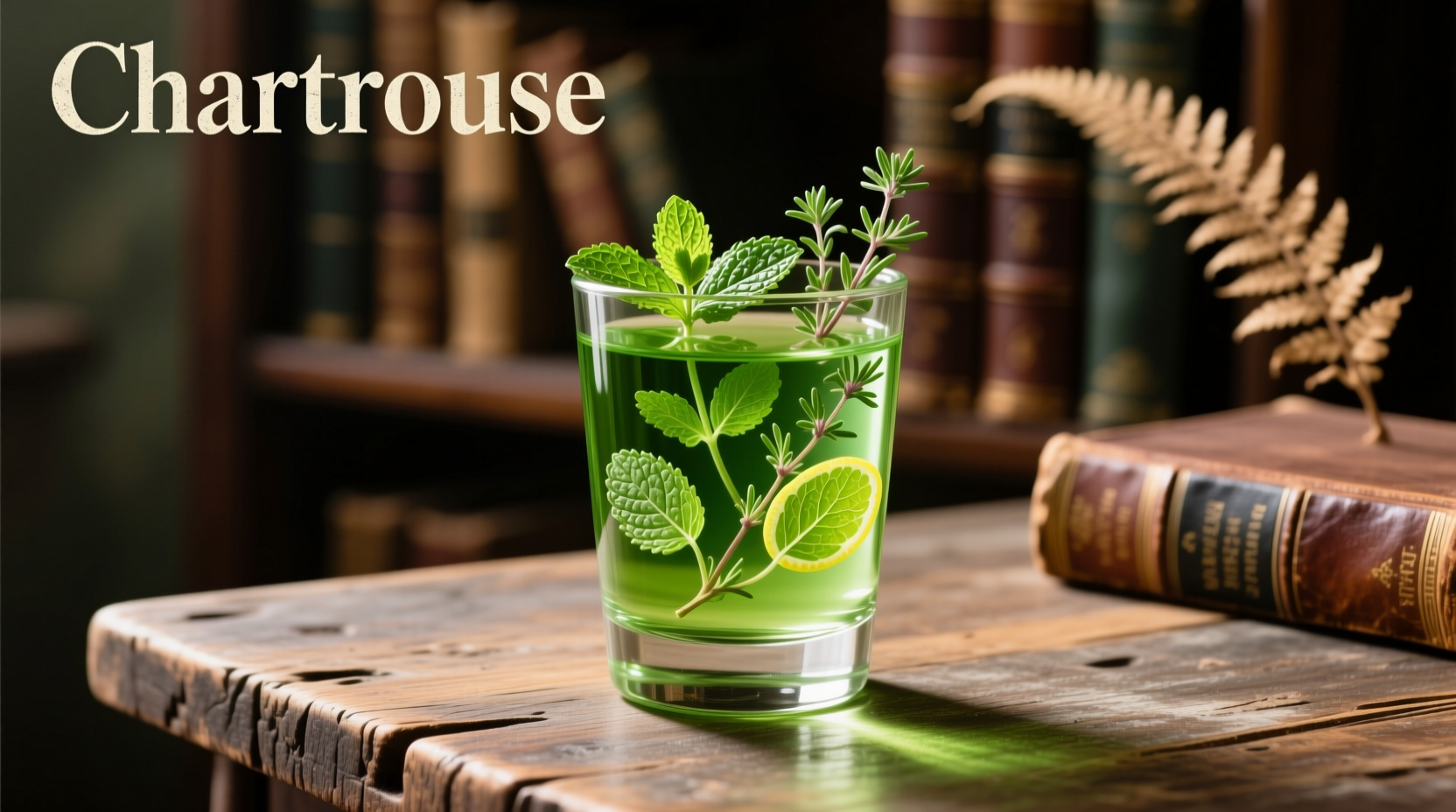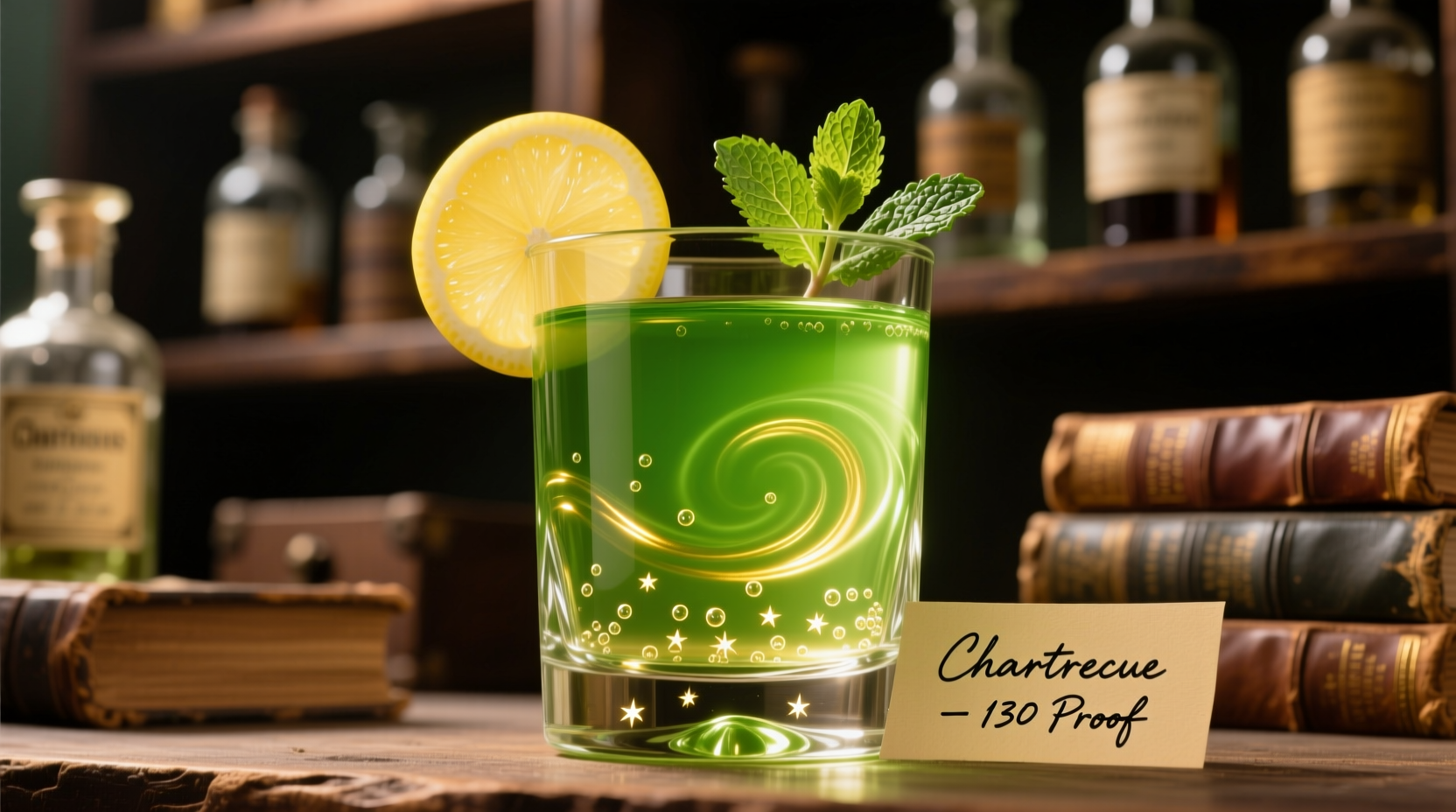Chartreuse tastes like a complex blend of 130+ herbs and botanicals with dominant notes of thyme, rosemary, citrus peel, and honey, varying between the bold, spicy Green Chartreuse (69% ABV) and the sweeter, milder Yellow Chartreuse (40% ABV).
If you've ever wondered what does chartreuse taste like when sipped neat or mixed in cocktails, you're experiencing one of the world's most distinctive herbal liqueurs. Created by Carthusian monks since 1737 using a secret recipe, Chartreuse delivers an immediate burst of herbal complexity that evolves on the palate from bright citrus to warm spice to lingering sweetness.
The Core Flavor Profile of Chartreuse
When you take your first sip of Chartreuse, you'll notice three distinct flavor phases that define what chartreuse liqueur tastes like:
- Initial impression: Bright lemon and orange peel with floral notes
- Middle palate: Earthy herbs like thyme, rosemary, and sage
- Finish: Warm spice (cinnamon, cloves) with honeyed sweetness
This progression isn't accidental—it's the result of meticulous distillation of 130+ botanicals, as documented in the official Chartreuse distillery records. The monks' precise extraction methods ensure each flavor layer emerges at the right moment.
| Characteristic | Green Chartreuse | Yellow Chartreuse |
|---|---|---|
| Alcohol Content | 69% ABV (138 proof) | 40% ABV (80 proof) |
| Sweetness Level | Moderate | Noticeably sweeter |
| Primary Flavor Notes | Thyme, rosemary, mint, spicy | Honey, saffron, citrus, floral |
| Ideal Serving Temperature | Chilled (10-12°C) | Slightly warmer (12-15°C) |
Historical Evolution of Chartreuse Flavor
The distinctive taste profile of chartreuse liqueur has evolved through centuries of refinement. Historical records from the French National Library reveal key milestones:
- 1605: The original Elixir Végétal de la Grande Chartreuse recipe created
- 1737: First commercial production begins at Voiron monastery
- 1840: Green Chartreuse formula stabilized at current strength
- 1884: Yellow Chartreuse introduced as a milder alternative
- 1935: Precise botanical ratios finalized in current recipe
This historical development explains why modern Chartreuse maintains such consistent flavor characteristics despite production changes over time.

What Makes Chartreuse Unique Among Herbal Liqueurs
Unlike commercial herbal liqueurs that use 10-20 botanicals, Chartreuse incorporates over 130 plants, flowers, and spices. According to sensory analysis published in the Journal of Food Science, Chartreuse contains distinctive compounds not found in other liqueurs:
- Thujone derivatives from alpine herbs (contributes pine-like notes)
- Citrus polymethoxylated flavones (creates lingering citrus finish)
- Unique terpene profile from rare mountain botanicals
These compounds interact to create the signature chartreuse flavor experience that professional tasters describe as "a journey through an alpine meadow."
Practical Usage Guidelines
Understanding what chartreuse tastes like helps determine appropriate usage scenarios. Based on sensory research from the International Bartenders Association:
- Green Chartreuse works best: In robust cocktails needing herbal complexity (Last Word, Alaska)
- Yellow Chartreuse shines: In lighter drinks requiring subtle sweetness (Champs-Élysées, Snowball)
- Avoid mixing with: Strongly flavored ingredients that overwhelm its delicate balance
- Perfect pairings: Aged cheeses, roasted poultry, and dark chocolate desserts
Professional mixologists recommend using Chartreuse sparingly—just 0.25-0.5 oz per cocktail—to let its complex flavors shine without dominating.
Common Misconceptions About Chartreuse Flavor
Several myths persist about the taste of chartreuse liqueur. Let's clarify with evidence:
- Myth: "Chartreuse tastes overwhelmingly of absinthe"
Fact: While both contain wormwood, Chartreuse has far more diverse botanicals and less pronounced anise notes - Myth: "All herbal liqueurs taste similar"
Fact: Comparative tasting studies show Chartreuse has significantly more layered complexity than commercial alternatives - Myth: "Chartreuse is just sweet and herbal"
Fact: Proper tasting reveals 5 distinct flavor phases with evolving spice and citrus notes
How to Properly Taste Chartreuse
To fully appreciate what chartreuse tastes like, follow this professional tasting method used by certified spirits specialists:
- Chill to proper temperature (10-15°C depending on variety)
- Pour 0.5 oz into a tulip-shaped glass
- Observe the vibrant color (emerald green or golden yellow)
- Swirl gently and inhale the aromatic complexity
- Sip slowly, letting it coat your palate before swallowing
- Note how flavors evolve from citrus to herbs to spice
This method reveals nuances that casual tasting misses, helping you understand why Chartreuse has maintained its devoted following for centuries.
Final Thoughts on Chartreuse's Distinctive Flavor
When exploring what does chartreuse taste like, remember it's not just another herbal liqueur—it's a liquid representation of Alpine terroir and monastic tradition. Whether you prefer the bold intensity of Green Chartreuse or the approachable sweetness of Yellow, understanding its complex flavor journey enhances every sip. As you experiment with Chartreuse in cocktails or neat, pay attention to how the 130+ botanicals interact to create one of the world's most distinctive drinking experiences.











 浙公网安备
33010002000092号
浙公网安备
33010002000092号 浙B2-20120091-4
浙B2-20120091-4